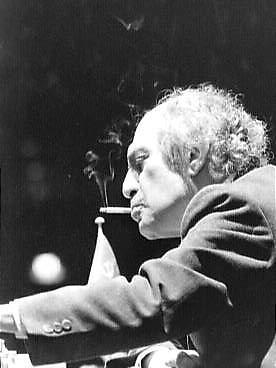
The Best Moves Never Played
Welcome to a new column called "The Best Moves Never Played" -- this article is a short introduction of what this column will or will not cover. During any real game some of the best moves were never played because the players did not find them over the board. And why is that? There are many reasons and there has been much discussion of which quality or qualities allow the player to get the gist of the position and find that very best move. These qualities include:
- Precise calculation
- Tactical vision
- Ability to correctly evaluate the resulting position
- Intuition
- Knowledge of typical plans/openings/endgames,
- Decision making and psychology
These are just to name a few. In some of these categories one can improve more or less straight forwardly. For example, calculation - one can take any position with tactics, start the procedure of choosing candidate moves, then determine in which order to calculate them and for how deep, and after doing this activity for many hours one's technique of calculating will definitely improve. Moreover, the material for improvement is widely available and easily accessible as there are dozens of books and websites dedicated to calculations. The same goes for tactical vision, by studying different combinational motifs one can improve in this category.
To illustrate the above concepts let us take a look at the following example from my recent practice. White has a dominating position due to their control of the d-file, especially the key d5-square. Black has trouble with development, the knight on a5 is cut out of play and the king is weak. Black's next move would probably be e4: to chase away the knight, cut the bishop off on g2 and to open the g7-bishop. White has three candidate moves here: Bd2, Bg5 or Be3. Why these moves? White needs to complete their development and every move should attack something. Of course, there are many lines to calculate here and one cannot make the best move without precise calculations. Even after the worst choice white's position will be better, so the stakes are not high, but with the best decision the game can end very soon. Which one would you choose?
The tactics of the above position included the idea of Bd8, in order to win the Na5, as well as intermediate moves to deflect the overloaded queen first from the f7-square and then away from the e6-square. Seeing these tactical motifs was crucial in finding the strongest move, Be3. The ability to evaluate the resulting position includes correctly evaluating the Q vs. 2R position, as well as the end of the Be3 line where black's pieces cannot move and their king is under attack. Be3 is not trivial to find at the board but with the right training method such moves are possible to calculate and justify by properly evaluating the resulting position.
On the other hand, how does one train to improve intuition? There are books written on this topic as well but the authors generally have trouble separating intuitive decisions from non-intuitive. Intuitive decisions are usually the ones that do not include much calculation, and also the ones that are backed up by calculation but where the resulting positions are very difficult to accurately evaluate. For example, Beim in his excellent book "The Enigma of Chess Intuition" defines intuition in this way: "intuition manifests itself first and foremost in the ability, in a somewhat unconscious way, and with a high degree of accuracy, to choose between different lines of play". The word unconscious will send most of the readers into panic - how does one train their unconscious mind? Does it work in the same way that muscle memory works?
To illustrate the concept of intuition at work we will look at one of my favorite examples from Beim's book. The position is complex - it is impossible to rely on calculations or positional evaluations here only, one needs to rely on intuition! Fischer makes a mistake in the position where there are no specific guidelines to follow.
Fishcher did not find the correct solution and went down to Geller pretty quickly. There is an anecdote that when Tal saw the score of the game he suggested the correct move right away. Regardless of whether this story is true or not, Tal later faced Bogdanovich in this very same position and proved his analysis over the board. Here is the game:
The difference between Fischer's and Tal's play lays in a small intermediate move Qc2. From c2 the queen takes control of two important white diagonals and the idea of Qd3 for black does not work anymore. Neither player could have calculated the variations to the end or evaluated the resulting positions accurately but Tal's intuition proved to be superior.
The articles that will be part of this column will address the listed qualities and give recommendations on how to improve them. The articles will feature games where the strongest move was not played during the game and we shall discuss the possible reasons for why the player did not find the best move. The first few articles will feature the topic of precise calculations.

